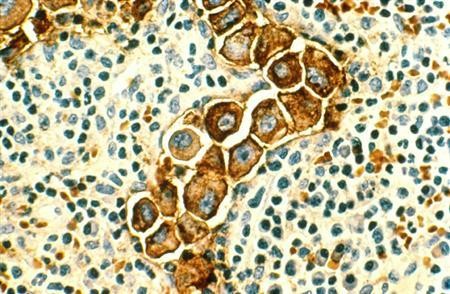A new study reveals that some breast cancer types use an enzyme that drills "seed holes" before inserting new tumors. This discovery could result in new treatments for certain secondary breast cancers (SBCs).
The breast's primary tumor releases the enzyme lysyl oxidase (Lox). Lox drills holes in bone that are ripe for metastatic (spreading) cancer cells to grow.
Dr. Alison Gartlan, the lead researcher from the University of Sheffield, explained that the cancer tumors first transmit signals to destroy the breast cancer patient's bone. Then the cancer cells arrive.
Cancer researchers have learned that bisphosphonate drugs block the cancer cell activity in mice. Such drugs can treat osteoporosis and prevent bone loss.
Physicians already prescribe the medication to men with advanced prostate cancer in their bones. The cancer drugs help to prevent pain and bone fractures.
Dr. Gartlan revealed that the new findings could result in new breast cancer treatments to prevent the growth of bone tumors. This could prevent "thousands" of breast cancer deaths.
Such medications could eventually lead to a breast cancer cure. SBCs that have spread to bones or organs are the top cause of breast cancer deaths, according to The Guardian.
Cancer researchers' next mission will be to learn precisely how the Lox secreted interacts with bone. New breast cancer medications could treat cancer metastasis.
The majority of breast cancers are "hormone sensitive," meaning that the female hormone estrogen powers them. However, the SBCs that used the Lox device to spread to cancer patients' bones was strangely non-estrogen sensitive.
Experts estimate that 85 percent of SBCs involve bone metastasis. About 40,300 breast cancer deaths are projected in the United States during 2015, according to Breast Cancer.org.
The British researchers' findings were reported in the journal Nature.



























